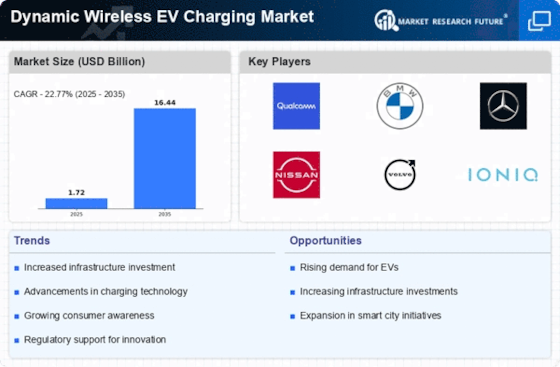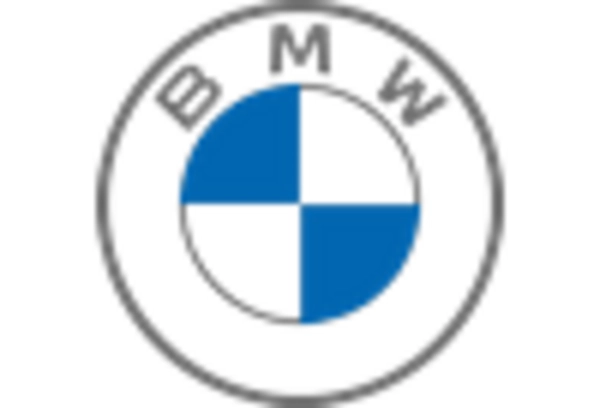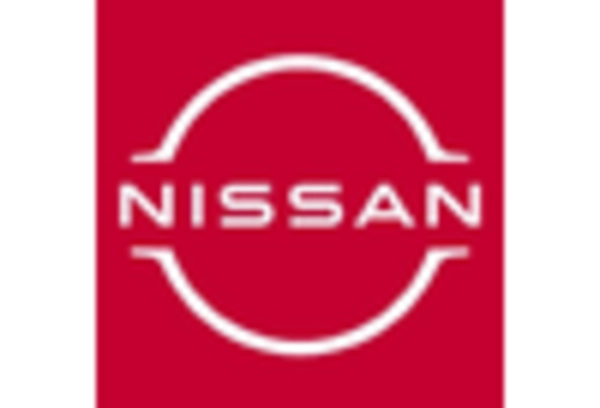Government Policies and Incentives
Government policies and incentives play a crucial role in shaping the Dynamic Wireless EV Charging Market. Many countries are implementing regulations that promote the adoption of EVs and the development of charging infrastructure. For instance, various governments are offering tax credits, rebates, and grants to encourage the installation of wireless charging systems. These initiatives not only support consumers but also incentivize manufacturers to innovate and invest in dynamic wireless charging technologies. As a result, the market is likely to witness accelerated growth, with projections suggesting a compound annual growth rate (CAGR) of over 20% in the coming years. This supportive regulatory environment is essential for the expansion of the Dynamic Wireless EV Charging Market.
Increased Adoption of Electric Vehicles
The rising adoption of electric vehicles (EVs) is a primary driver for the Dynamic Wireless EV Charging Market. As consumers increasingly opt for EVs due to environmental concerns and government incentives, the demand for efficient charging solutions grows. In 2025, it is estimated that the number of electric vehicles on the road will surpass 30 million, creating a substantial need for innovative charging technologies. Dynamic wireless charging systems offer a seamless experience, allowing vehicles to charge while in motion, thus addressing range anxiety and enhancing the practicality of EVs. This trend indicates a shift towards more sustainable transportation solutions, further propelling the Dynamic Wireless EV Charging Market.
Urbanization and Smart City Initiatives
Urbanization and the rise of smart city initiatives are pivotal factors driving the Dynamic Wireless EV Charging Market. As urban populations grow, the demand for efficient transportation solutions increases, necessitating the development of advanced charging infrastructure. Smart cities are increasingly incorporating dynamic wireless charging systems into their urban planning, aiming to reduce congestion and enhance mobility. This integration not only facilitates the use of electric vehicles but also aligns with sustainability goals. By 2025, it is projected that smart city investments will exceed $2 trillion, creating a fertile ground for the expansion of the Dynamic Wireless EV Charging Market. The synergy between urban development and innovative charging solutions is likely to foster a more sustainable urban environment.
Consumer Demand for Convenience and Efficiency
Consumer demand for convenience and efficiency is a significant driver of the Dynamic Wireless EV Charging Market. As lifestyles become increasingly fast-paced, the need for hassle-free charging solutions is paramount. Dynamic wireless charging offers the advantage of charging vehicles without the need for physical connections, allowing for a more user-friendly experience. This convenience is particularly appealing to urban drivers who may not have access to traditional charging stations. Market Research Future indicates that over 70% of consumers express interest in wireless charging technologies, highlighting a strong preference for solutions that enhance their daily routines. As manufacturers respond to this demand, the Dynamic Wireless EV Charging Market is poised for substantial growth, catering to the evolving needs of consumers.
Technological Innovations in Charging Solutions
Technological innovations are significantly influencing the Dynamic Wireless EV Charging Market. Advances in power transfer efficiency, battery technology, and communication systems are enhancing the feasibility and effectiveness of wireless charging solutions. For example, recent developments in resonant inductive coupling technology have improved energy transfer rates, making dynamic charging more viable for real-world applications. Furthermore, the integration of smart grid technologies allows for better energy management and optimization of charging processes. As these innovations continue to evolve, they are expected to attract investments and drive market growth, with the potential to revolutionize the way electric vehicles are charged. The Dynamic Wireless EV Charging Market stands to benefit immensely from these advancements.

















Leave a Comment